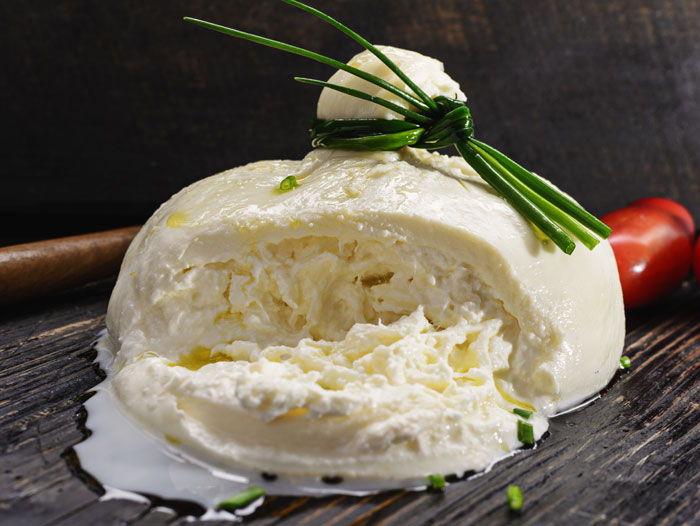Burrata: The Surprising Origin of Italy’s Creamy Cheese
October 6, 2020 | 1 min to read

The first time you see a burrata sitting on a plate, tilted, you might be perplexed. Burrata is as white as mozzarella but comes with a strange narrowing at the top, like a giant dumpling. With a knife and fork, you poke the pouch, knowing something hides below that initial cheese layer. With a firm stroke, you cut the sachet in two, and the filling made of cream and mozzarella strips spills out and spreads across the plate. You roll the mozzarella strips with your fork like spaghetti, and with cream dripping, you have the first bite: an explosion of milk mixed with sweet cream and mozzarella.
You can find burrata around the world, predominantly in high-end food stores and restaurants. According to the Italian dairy association Assolatte, $56m worth of burrata was produced in Italy in 2018, then distributed to Rome cafes, Tokyo markets and New York restaurants. Italian immigrants exported the recipe around the world, and today, burrata is produced in places from Estonia to Argentina. The cheese is used to top Neapolitan pizza, on the side of shrimps or as an accompaniment to spaghetti al pomodoro.
To read the rest of the story, please go to: BBC
